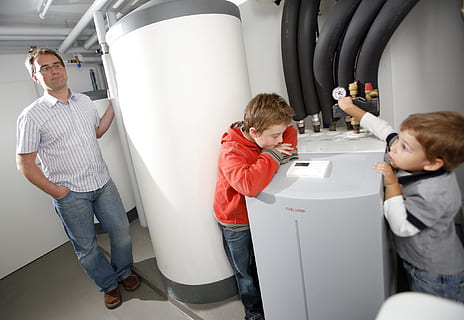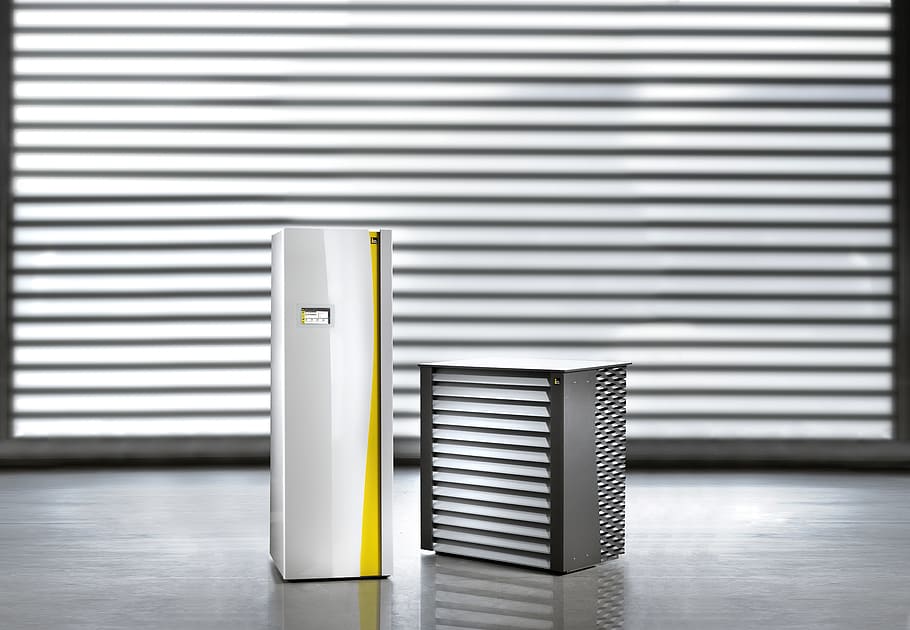Know the Components of Your Heat Pump
Contents
– Components whose operation is a guarantee of quality
– Accessories to check that your heat pump is working properly
The principle of a heat pump is relatively simple: it works a bit like a refrigerator in reverse. It consists of an evaporator, a compressor, a condenser, and an expansion valve. But are these components enough for your heat pump to work correctly?
There are other components, the value of which should be studied on a case-by-case basis, depending on your home. They are a guarantee of quality and durability. Some of them will also check that your system is working correctly.
Components whose operation is a guarantee of quality
Filter drier
The filter drier allows to absorb and retain water. It is positioned after the liquid sight glass and before the pressure regulator.
Heat pump pressure switch

A heat pump is usually equipped with high-pressure and low-pressure switches. They allow protecting your heat pump in case of too high or too low pressure. Read more: How to Choose between High or Low-Temperature Heat Pump?
Pressure transmitters
The pressure transmitter measures the pressure of your heat pump. The measurement is transmitted to the regulator. Not all heat pumps are equipped with them, especially if their power is less than 150 kW, but they guarantee quality. Read more: How a Heat Pump Works.
Lubricating oil
The lubricating oil allows, as its name indicates, to lubricate the parts of your heat pump.
Anti-shock bottle
The anti-knock bottle is placed between the evaporator and the compressor; it avoids the aspiration of refrigerant by the compressor.
The anti-blowback bottle is handy on air-source heat pumps because during the cycle inversion (defrosting), the compressor suddenly sucks refrigerant.
Regulation accessories and thermostats for heat pumps
Room thermostat, water law regulator, these accessories allow adapting the temperature generated by the heat pump.
Buffer tank: a plus for the heat pump
The buffer tank (or storage tank) is a reservoir between the heat pump and the heating system that stores hot water to reduce the heat pump’s times. For the same function, there are also direct hot water tanks.
What is the purpose of a buffer tank?
The buffer tank of a heat pump is a hot water tank located between the heat pump and the heating pipes. The heat pump only starts to heat the water in this tank from which the heating circuit draws the hot water it needs.
It takes over from the heat pump to prevent it from being overloaded:
– Indeed, a sawtooth operation, with frequent stops and starts aimed at meeting regular and short-term hot water needs (which is the case of a water heater that must regularly replenish its hot water supply), ends up deteriorating the heat pump’s compressor.
– In addition, this phenomenon alters the performance of the heat pump.
– Thus, a heat pump equipped with a buffer tank has a longer life and breaks down less often.
Accessories to check that your heat pump is working properly
Liquid sight glass
The liquid sight glass is an essential element; it ensures that there are no air bubbles at the outlet of the condenser and that the refrigerant is 100% in the liquid state.
The liquid sight glass also has a moisture indicator to monitor the moisture content of the refrigerant. The liquid indicator changes color when moisture is present.
Consumption indicator
The consumption indicator, or energy meter, allows estimating the consumption of a part of an electrical installation (heating, heat pump, air conditioning…) for each tariff period.
Coming up next
Our reading advice to be fully informed about heat pumps:
– Take a look at the lexicon of the heat pump.
– Understand the operating principle of geothermal heating of the heat pump.
– Heat pumps are also used to heat swimming pools.

